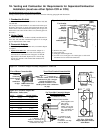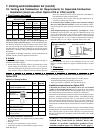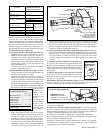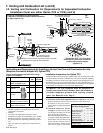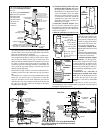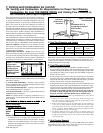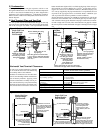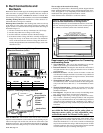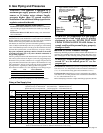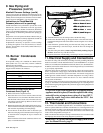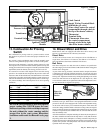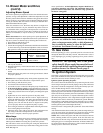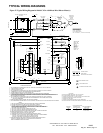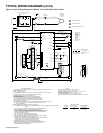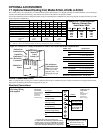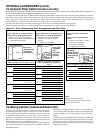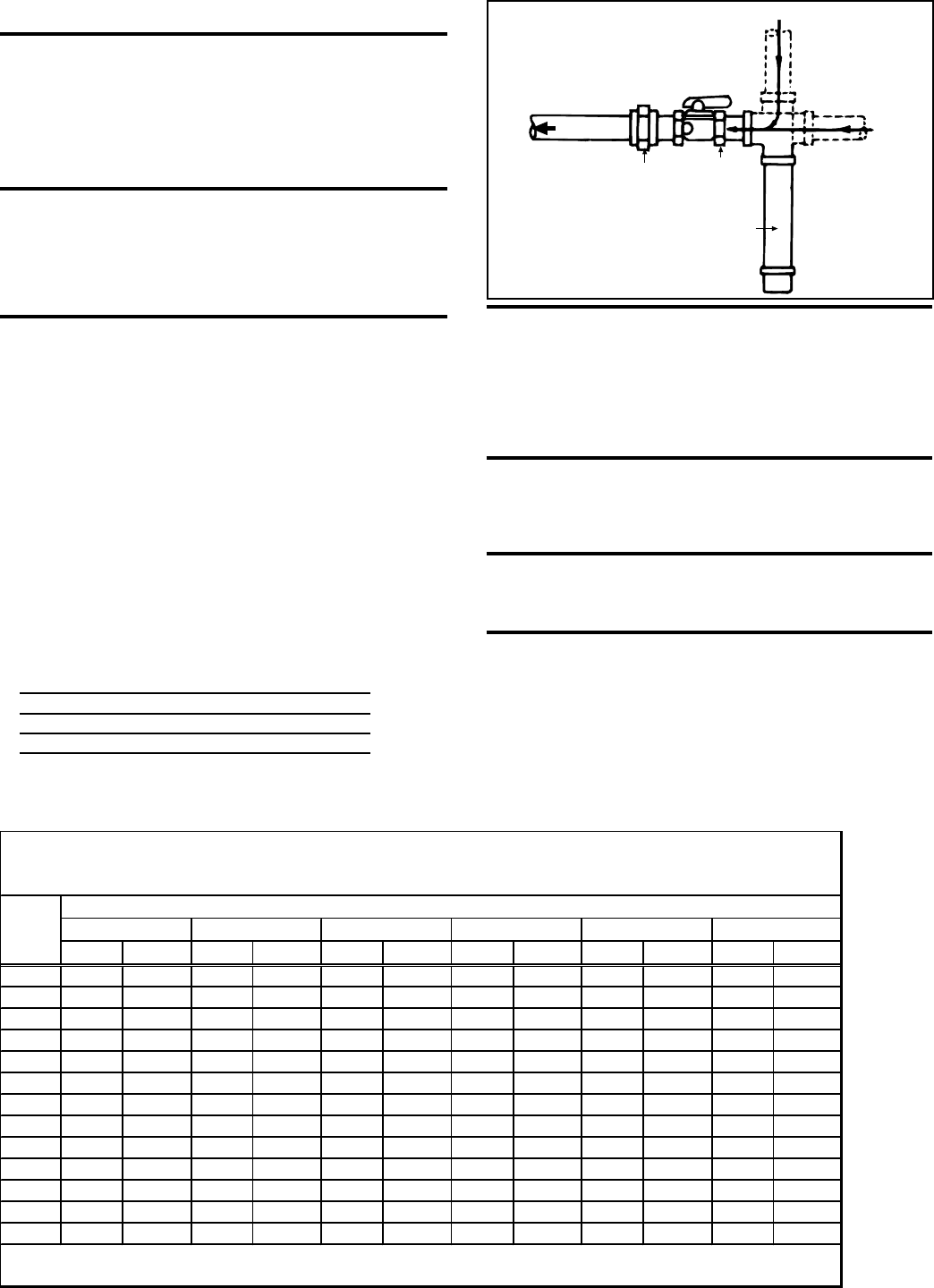
Mfg No. 164771, Page 13
Sizing a Gas Supply Line
9. Gas Piping and Pressures
WARNING: This appliance is equipped for a
maximum gas supply pressure of 1/2 pound, 8
ounces, or 14 inches water column. Supply
pressure higher than 1/2 pound requires
installation of an additional lockup-type service
regulator external to the unit.
PRESSURE TESTING SUPPLY PIPING
Test Pressures Above 1/2 PSI: Disconnect the heater and manual
valve from the gas supply line which is to be tested. Cap or plug the
supply line.
Test Pressures Below 1/2 PSI: Before testing, close the manual
valve on the heater.
All piping must be in accordance with requirements outlined in the
National Fuel Gas Code ANSI Z223.1a (latest edition) or CAN/CGA-
B149.1 and B149.2 (See Paragraph 1). Gas supply piping installation
should conform with good practice and with local codes.
Unit heaters are orificed for operation with natural gas having a heating
value of 1000 (± 50) BTUH per cubic ft or propane gas with a heating
value of 2550 BTUH per cubic ft. If the gas at the installation site does
not meet these specifications, consult the factory for proper orificing.
Pipe joint compounds (pipe dope) shall be resistant to the action
of liquefied petroleum gas or any other chemical constituents of
the gas being supplied.
Install a ground joint union and manual shutoff valve upstream of the
unit control system as shown in Figure 13. The 1/8" plugged tapping in
the shutoff valve provides connection for a supply line pressure test
gauge. The National Fuel Gas Code requires the installation of a trap
with a minimum 3" drip leg. Local codes may require a minimum drip
leg longer than 3" (typically 6"). Bleed gas lines of trapped air.
Gas connection is either 1/2" or 3/4" depending on size and type of gas.
Size Gas Gas Connection
150-200 Natural 1/2"
250-400 Natural 3/4"
150-400 Propane 1/2"
Leak-test all connections by brushing on a leak-detecting solution.
WARNING: All components of a gas supply
system must be leak tested prior to placing
equipment in service. NEVER TEST FOR
LEAKS WITH AN OPEN FLAME. Failure to
comply could result in personal injury, property
damage or death.
Manifold or Orifice Pressure Settings
Measuring manifold gas pressure cannot be done until the heater is in
operation. It is included in the steps of the "Check-Test-Start" proce-
dure in Paragraph 22. The following warnings and instructions apply.
WARNING: Manifold gas pressure must never
exceed 3.5" w.c. for natural gas or 10" w.c. for
propane gas.
For Natural Gas: Manifold gas pressure is regulated by the combina-
tion valve to 3.5" w.c. Inlet pressure to the valve must be a minimum of
5" w.c. or as noted on the rating plate and a maximum of 14" w.c.
For Propane Gas: Manifold gas pressure is regulated by the combina-
tion valve to 10" w.c. Inlet pressure to the valve must be a minimum of
11" w.c. and a maximum of 14" w.c.
Before attempting to measure or adjust manifold gas pressure, the inlet
From Gas Supply
From
Gas
Supply
6 Drip Leg
NOTE:
Connections
shown are by
the installer.
To Controls
Manual
Gas Valve
Immediately upstream of the gas
supply connection, install a manual
shutoff valve with a 1/8 NPT
plugged tap accessible for test
gauge connection.
Ground Joint Union
Figure 13 -
Supply Piping
Connection
Capacity of Piping
- Cubic Feet per Hour based on 0.3" w.c. Pressure Drop
Specific Gravity for Natural Gas -- 0.6 (Natural Gas -- 1000 BTU/Cubic Ft)
Specific Gravity for Propane Gas -- 1.6 (Propane Gas -- 2550 BTU/Cubic Ft)
Length Diameter of Pipe
of 1/2" 3/4" 1" 1-1/4" 1-1/2" 2"
Pipe Natural Propane Natural Propane Natural Propane Natural Propane Natural Propane Natural Propane
20’ 92 56 190 116 350 214 730 445 1100 671 2100 1281
30’ 73 45 152 93 285 174 590 360 890 543 1650 1007
40’ 63 38 130 79 245 149 500 305 760 464 1450 885
50’ 56 34 115 70 215 131 440 268 670 409 1270 775
60’ 50 31 105 64 195 119 400 244 610 372 1105 674
70’ 46 28 96 59 180 110 370 226 560 342 1050 641
80’ 43 26 90 55 170 104 350 214 530 323 990 604
90’ 40 24 84 51 160 98 320 195 490 299 930 567
100’ 38 23 79 48 150 92 305 186 460 281 870 531
125’ 34 21 72 44 130 79 275 168 410 250 780 476
150’ 31 19 64 39 120 73 250 153 380 232 710 433
175’ 28 17 59 36 110 67 225 137 350 214 650 397
200’ 26 16 55 34 100 61 210 128 320 195 610 372
Note: When sizing supply lines, consider possibilities of future expansion and increased requirements.
Refer to National Fuel Gas Code for additional information on line sizing.



